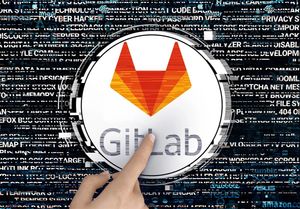Unlike the current App stores and technology of today, all Netverse management tools will be integrated into its, patented, app-less technology and platform.
Instantly available and free to all businesses and platforms when they join Netverse.
Netverse Dynamic real-time pricing will be based on current market conditions and fluctuations including wholesale prices, consumer demand and the goals of the business and platform.
Today Phinge will discuss how, through their upcoming free inventory management tools, dynamic, real-time pricing will work for the goods and services sold through Netverse.
Here is an example using a restaurant.
As wholesale prices fluctuate to the restaurant, the retail price of each menu item can dynamically change higher or lower to keep consistent with the food cost % set for each menu item by the restaurant.
The prices displayed online throughout Netverse can dynamically change in real-time and even in singular or the totality of the restaurants physical locations through their digital menu boards.
Restaurants may choose to only have the prices dynamically change in the geographical locations of where the wholesalers prices have changed.
Dynamic real-time pricing tools will be a built-in component of the Netverse inventory management system. It is designed for and will be made available to the food service industry, including restaurants on Netverse. The pricing tools will help restaurant owners and managers set item and combination prices based on a desired food cost percentage and profit margin. It will be an automated, real-time pricing tool that fluctuates and adjusts with wholesale food prices and market demand to create real-time, dynamic menu pricing throughout Netverse, through Phinge's proprietary mobile devices and point-of sale hardware.
This management tool will work by first connecting each restaurant with their wholesale food distributors who also have platforms on Netverse.
Here is an example of a restaurant (user) setting up their menu items to determine their retail price, based on their goal food cost, for dynamic real-time, pricing.
In the menu costing system, users input each ingredients description and costs, including the quantity and unit of measurement which will form the foundation for all subsequent menu pricing calculations. This will be done easily through the system.
The process begins with them imputing individual items and their ingredients and units of measurement.
- Add individual ingredients: For each distinct individual ingredient, the user creates an entry in the system.
- Enter the purchase price: Users input the wholesale cost of the ingredient exactly as it appears on the most recent suppliers online invoices.
- Specify the unit of measurement: Alongside the price, the user defines the unit of measure (UoM) for that price, such as "$4.00 per pound" for ground beef or "$12 per 3-pound bag" for chicken. Then input the amount of ground beef this menu item requires. (User) then repeats this process for every item in the recipe, such as cheese, lettuce, tortilla etc.
- Set the standard UoM for recipes: For consistency, the user can also set a standard UoM for how that ingredient will be used in recipes. For example, while chicken is purchased by the pound, it might be used in recipes in ounces. The system then converts the cost automatically for use in recipes.
- Calculate the unit cost: The system divides the total cost by the quantity purchased to determine the cost per unit. For example, if a 10-pound bag of beef costs $40, the unit cost is $4.00 per pound. It then calculates from the input amount of 4oz of beef in this item, the wholesale cost, which is $1.00 . If it's a unit measurement, let's say an Avocado, and the unit cost is $2.00 each and the menu item requires half an avocado, it would add $1.00 to the total wholesale cost of the menu item. It now repeats this process for every ingredient in the menu item.
- Account for waste: The system allows for optional adjustments to the unit cost to account for spoilage and other types of waste, which provides a more accurate picture of the true wholesale cost per ingredient.
- Calculate menu item costs: Once all individual ingredients are entered, the system then aggregates these costs to provide a total wholesale food cost for the final menu item.
- Combination pricing: The tool extends to combination meals and bundles. It calculates the total wholesale cost of the combinations or bundles by all the items in them and then suggests a retail price for the combination or bundle based on a target food cost percentage set by the user. If the food cost % is different for each singular item in them, it will average the food cost % among them.
The user now inputs their desired food cost % for each item. The system will give the user real-time, data-driven suggested retail prices for each item, combination and bundle.
The final decision remains with the user, who can accept it or manually adjust the retail price of the item or combinations and bundles by changing the food cost price higher or lower.
This free Netverse tool gives restaurant owners and management direct control over their cost inputs, allowing for automated adjustments for price fluctuations, negotiations with their suppliers, and precisely track profitability based on the latest figures for each item or in their aggregate.
Dynamic pricing for platforms that sell goods through Netverse.
Any goods can be priced dynamically using the parts and components in them, in the same way ingredients were shown in the example above.
Dynamic pricing for the service industry on Netverse.
Any services can be priced dynamically, like let's say house cleaning. Simply input labor cost per hour, hours to complete the job, cost of the cleaning supplies required for doing the cleaning. Then set the % of profit you want to make and the Netverse tools will set the retail price for the service. As the above example shows, if labor or cleaning supply cost change, it will automatically adjust the retail price of the house cleaning service.
The free dynamic pricing feature is another advantage among many, that all businesses and platforms on Netverse will have access, to help them drive profits through increased sales and to prosper and thrive.
To see this dynamic pricing in action, please vist
https://www.phinge.com/porthole.html
To learn more about Netverse App-less platform, please visit us here
https://www.phinge.com/netverse.html
Photos: (Click photo to enlarge)




Source: Phinge Corporation
Read Full Story - Netverse By Phinge, To Offer Wholesale-To-Retail, Real-time, Dynamic Pricing On Goods & Services To Maximize The Profits Of All Third Party Platforms | More news from this source
Press release distribution by PRLog





